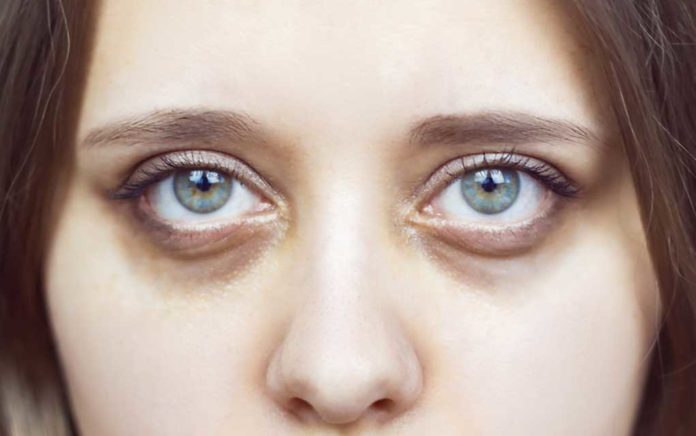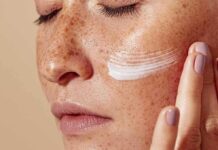
(GoHealthier.com) – It’s probably fair to say that none of us like allergies. Sneezing, runny noses, headaches, coughing and drainage are annoying, to say the least. In addition to these typical symptoms, some of us may experience large, swollen, dark circles beneath our eyes, sometimes called allergy shiners.
Thankfully, there are effective ways to treat these bags under our eyes. We have more about why allergy shiners happen and nine ways to treat them in the article below.
| Quick Read: Treating allergy shiners might be as simple as taking an antihistamine or decongestant. In most cases, we can resolve the shiners by preventing or treating reactions to the underlying allergies. Strategies include using nasal steroids, eye drops, prescription medication, cold compresses, caffeine, and hemorrhoid cream. We have more about each of these options in the full story. |
Learn 9 Ways to Treat Allergy Shiners.
Dark Circles
Our bodies mount a response when they perceive a threat from foreign substances or particles we breathe or ingest. In the instances of pollen, dust, smoke, or other inhaled allergens, our bodies produce histamines that attack those substances, and our systems dilate lymph nodes and blood vessels to bring more white blood cells to the area to join in the attack. We may even run a low-grade fever.
Functionally, we produce more mucus, lending to the runny nose, drainage, and coughing. If we experience allergies chronically or develop sinus infections, our sinuses’ resulting damage may cause congestion and pain.
Blood vessels might also experience congestion, causing pooling under our eyes and leading to heavy, dark under-eye circles. While allergies are the most frequent cause of those dark bags, medical conditions, high salt diets, aging, genetics, sleep deprivation, and dehydration might also be factors. Anytime we experience congestion, we might be at risk for shiners.
Treat the Cause
To treat the causes of allergy shiners, try the following options:
- Oral or nasal antihistamines: These may help treat occasional or chronic allergies.
- Decongestants: If we are already experiencing nasal congestion, these might also be necessary.
- Nasal steroid sprays: Controlling inflammation can be key.
- Anti-inflammatory eye drops: These may help decongest blood vessels under the eyes, also.
- Montelukast: Using a prescription drug designed to reduce nasal and sinus inflammation associated with chronic sinusitis may be a game-changer. However, this medication can cause significant behavioral and mood changes and should only be used as a last resort. Because it is only available through prescription, be sure to discuss its benefits and side effects with a healthcare provider.
- Prevention: When possible, preventing allergy shiners from occurring in the first place is always the best treatment. This may be accomplished by trying some of the above-listed options, such as decongestants and antihistamines.
We should also try to prevent exposure to allergens by staying indoors during allergy season, keeping doors and windows closed, using air filtration systems with HEPA filters, and humidifying indoor air.
Treat the Symptoms
Once we have allergy shiners, our main concern might be reducing their appearance. There are a few things we can try, including:
- Hemorrhoid creams: Designed to constrict blood vessels elsewhere, these creams may be carefully applied under the eyes. Use care to keep creams out of the eyes.
- Cold compresses: Whether we use cucumbers or cold washcloths, the temperature primarily reduces swelling by constricting blood vessels. Eliminating pooling is the key to getting rid of the dark shading under our eyes.
- Caffeine: While most of us take our coffee or tea internally, there’s something to be said for using chilled tea bags as compresses. Caffeine adds to the vasodilation effect of the cool temperature.
Shiners might be a chronic problem that does not respond to allergy treatments. If there are no other underlying health issues, we can always seek out a dermatologist to talk about non-surgical options like fillers, laser resurfacing or chemical peels.
It’s time to see a healthcare professional if over-the-counter treatments aren’t working, day-to-day activities are impaired, we run a fever, we have greenish-colored nasal discharge or we have other health conditions that might worsen allergies or congestion. A quick consultation might give us peace of mind and solutions we didn’t have access to before.
Treating allergy shiners might be as easy as treating or preventing the underlying allergies that cause them. If shiners persist, we have acute treatment options, as well. Our best strategy might be using several of these nine options in concert to help us feel and look our best.
~Here’s to a Healthier Life!
Copyright 2024, GoHealthier.com














